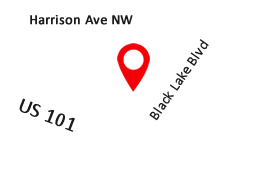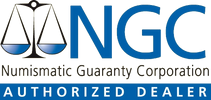Gold as an Investment
Of all the precious metals, gold is the most popular as an investment. Investors generally buy gold as a way of diversifying risk, especially through the use of futures contracts and derivatives. The gold market is subject to speculation and volatility as are other markets. Compared to other precious metals used for investment, gold has the most effective safe haven and hedging properties across a number of countries.
Gold Price
Gold has been used throughout history as money and has been a relative standard for currency equivalents specific to economic regions or countries, until recent times. Many European countries implemented gold standards in the latter part of the 19th century until these were temporarily suspended in the financial crises involving World War I. After World War II, the Bretton Woods system pegged the United States dollar to gold at a rate of US$35 per troy ounce. The system existed until the 1971 Nixon Shock, when the US unilaterally suspended the direct convertibility of the United States dollar to gold and made the transition to a fiat currency system. The last major currency to be divorced from gold was the Swiss Franc in 2000.
Since 1919 the most common benchmark for the price of gold has been the London gold fixing, a twice-daily telephone meeting of representatives from five bullion-trading firms of the London bullion market. Furthermore, gold is traded continuously throughout the world based on the intra-day spot price, derived from over-the-counter gold-trading markets around the world (code "XAU"). The following table sets out the gold price versus various assets and key statistics at five-year intervals.
Influencing Factors
Like most commodities, the price of gold is driven by supply and demand, including speculative demand. However, unlike most other commodities, saving and disposal play larger roles in affecting its price than its consumption. Most of the gold ever mined still exists in accessible form, such as bullion and mass-produced jewelry, with little value over its fine weight — so it is nearly as liquid as bullion, and can come back onto the gold market. At the end of 2006, it was estimated that all the gold ever mined totalled 158,000 tonnes (156,000 long tons; 174,000 short tons).The investor Warren Buffett has said that the total amount of gold in the world that is above ground could fit into a cube with sides of just 20 metres (66 ft) (which is roughly consistent with 158,000 tonnes based on a specific gravity of 19.3). However, estimates for the amount of gold that exists today vary significantly and some have suggested the cube could be a lot smaller or larger.[by whom?]
Given the huge quantity of gold stored above ground compared to the annual production, the price of gold is mainly affected by changes in sentiment, which affects market supply and demand equally, rather than on changes in annual production. According to the World Gold Council, annual mine production of gold over the last few years has been close to 2,500 tonnes. About 2,000 tonnes goes into jewelry or industrial/dental production, and around 500 tonnes goes to retail investors and exchange-traded gold funds.War, invasion and national emergency
When dollars were fully convertible into gold via the gold standard, both were regarded as money. However, most people preferred to carry around paper banknotes rather than the somewhat heavier and less divisible gold coins. If people feared their bank would fail, a bank run might result. This happened in the USA during the Great Depression of the 1930s, leading President Roosevelt to impose a national emergency and issue Executive Order 6102 outlawing the "hoarding" of gold by US citizens. There was only one prosecution under the order, and in that case the order was ruled invalid by federal judge John M. Woolsey, on the technical grounds that the order was signed by the President, not the Secretary of the Treasury as required.
Hedge Against Financial Stress
Gold, like all precious metals, may be used as a hedge against inflation, deflation or currency devaluation. A unique feature of gold is that it has no default risk.[31] As Joe Foster, portfolio manager of the New York-based Van Eck International Gold Fund, explained in September 2010:
The currencies of all the major countries are under severe pressure because of massive government deficits. The more money that is pumped into these economies – the printing of money basically – then the less valuable the currencies become.
Jewelry and Industrial Demand
Jewelry consistently accounts for over two-thirds of annual gold demand. India is the largest consumer in volume terms, accounting for 27% of demand in 2009, followed by China and the USA.[34]
Industrial, dental and medical uses account for around 12% of gold demand. Gold has high thermal and electrical conductivity properties, along with a high resistance to corrosion and bacterial colonization. Jewelry and industrial demand have fluctuated over the past few years due to the steady expansion in emerging markets of middle classes aspiring to Western lifestyles, offset by the financial crisis of 2007–2010.
Gold Jewelry Recycling
In recent years the recycling of second-hand jewelry has become a multibillion-dollar industry. The term "Cash for Gold" refers to offers of cash for selling old, broken, or mismatched gold jewelry to local and online gold buyers. There are many websites that offer these services.
However, there are many companies that have been caught taking advantage of their customers, paying a fraction of what the gold or silver is really worth, leading to distrust in many companies.
War, Invasion and National Emergency
When dollars were fully convertible into gold via the gold standard, both were regarded as money. However, most people preferred to carry around paper banknotes rather than the somewhat heavier and less divisible gold coins. If people feared their bank would fail, a bank run might result. This happened in the USA during the Great Depression of the 1930s, leading President Roosevelt to impose a national emergency and issue Executive Order 6102 outlawing the "hoarding" of gold by US citizens. There was only one prosecution under the order, and in that case the order was ruled invalid by federal judge John M. Woolsey, on the technical grounds that the order was signed by the President, not the Secretary of the Treasury as required.
Gold Bars
The most traditional way of investing in gold is by buying bullion gold bars. In some countries, like Canada, Austria, Liechtenstein and Switzerland, these can easily be bought or sold at the major banks. Alternatively, there are bullion dealers that provide the same service. Bars are available in various sizes. For example, in Europe, Good Delivery bars are approximately 400 troy ounces (12 kg). 1 kilogram (32 ozt) are also popular, although many other weights exist, such as the 10oz, 1oz, 10 g, 100 g, 1 kg, 1 Tael, and 1 Tola.
Bars generally carry lower price premiums than gold bullion coins. However larger bars carry an increased risk of forgery due to their less stringent parameters for appearance. While bullion coins can be easily weighed and measured against known values to confirm their veracity, most bars cannot, and gold buyers often have bars re-assayed. Larger bars also have a greater volume in which to create a partial forgery using a tungsten-filled cavity, which may not be revealed by an assay. Tungsten is ideal for this purpose because it is much less expensive than gold, but has the same density (19.3 g/cm³).
Good delivery bars that are held within the London bullion market (LBMA) system each have a verifiable chain of custody, beginning with the refiner and assayer, and continuing through storage in LBMA recognized vaults. Bars within the LBMA system can be bought and sold easily. If a bar is removed from the vaults and stored outside of the chain of integrity, for example stored at home or in a private vault, it will have to be re-assayed before it can be returned to the LBMA chain. This process is described under the LBMA's "Good Delivery Rules".
The LBMA "traceable chain of custody" includes refiners as well as vaults. Both have to meet their strict guidelines. Bullion products from these trusted refiners are traded at face value by LBMA members without assay testing. By buying bullion from an LBMA member dealer and storing it in an LBMA recognized vault, customers avoid the need of re-assaying or the inconvenience in time and expense it would cost. However this is not 100% sure, for example, Venezuela moved its gold because of the political risk for them, and as the past shows, even in countries considered as democratic and stable, for example in the USA in the 1930s gold was seized by the government and legal moving was banned.
Efforts to combat gold bar counterfeiting include kinebars which employ a unique holographic technology and are manufactured by the Argor-Heraeus refinery in Switzerland.
Gold Coins
Gold coins are a common way of owning gold. Bullion coins are priced according to their fine weight, plus a small premium based on supply and demand (as opposed to numismatic gold coins, which are priced mainly by supply and demand based on rarity and condition).
The sizes of bullion coins range from one-tenth of an ounce to two ounces, with the one-ounce size being most popular and readily available.[citation needed]
The Krugerrand is the most widely held gold bullion coin, with 46 million troy ounces (1,400 tonnes) in circulation. Other common gold bullion coins include the Australian Gold Nugget (Kangaroo), Austrian Philharmoniker (Philharmonic), Austrian 100 Corona, Canadian Gold Maple Leaf, Chinese Gold Panda, Malaysian Kijang Emas, French Napoleon or Louis d'Or, Mexican Gold 50 Peso, British Sovereign, American Gold Eagle, and American Buffalo.





